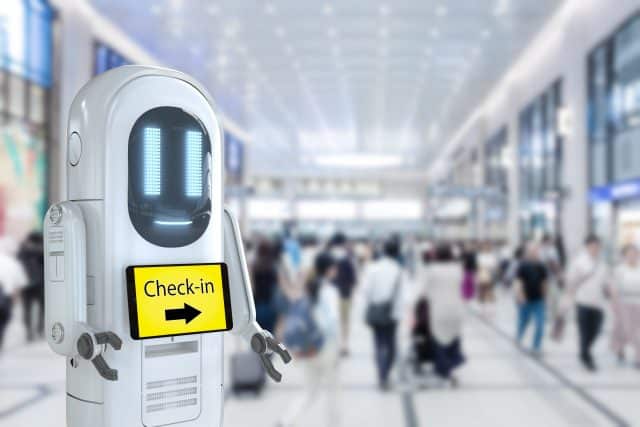Endless waiting times at airports have long been a source of frustration for passengers. However, innovation has entered the airport domain, aiming to make the passenger experience smoother and more enjoyable. From digitizing procedures to introducing cutting-edge technologies, let’s explore how airports are striving to reduce waiting times and enhance the traveler’s experience.
Innovative strategies to reduce waiting times
Online and automated check-in
One major advancement is the introduction of online check-in. Passengers can now check in and print their boarding passes from the comfort of their homes or at the airport through self-service kiosks. This automation helps reduce traditional queues at check-in counters, providing a significant time-saving benefit.
Faster security checks
Airports are increasingly investing in advanced security technologies to speed up security checks. Next-generation scanners, automatic detection systems for undesirable items, and biometric checks contribute to a faster and more efficient security procedure. Passengers thus benefit from a smoother experience without compromising security.
Automated baggage handling
Automated baggage handling is another area seeing significant improvements. Technologies like RFID tags enable real-time tracking of luggage, minimizing the risk of losses. Moreover, automated sorting systems reduce human errors, ensuring that baggage arrives at the destination simultaneously with passengers.
Mobile apps and real-time notifications
Airline and airport mobile apps play an increasing role in reducing waiting times. Passengers can receive real-time notifications about gate changes, delays, or other relevant information, minimizing unnecessary waiting times in airport common areas.

Automatic people counting systems
Airports are increasingly integrating automatic people counting systems to optimize passenger flow management. These technologies use advanced sensors, cameras, and intelligent algorithms to monitor the number of people in different airport zones in real-time. Thanks to these systems, teams can anticipate potential congestions, adjust resources accordingly, and ensure a smooth flow of passengers.
The benefits of these automatic counting systems are manifold. They enable better human resource planning, reduce waiting times at strategic points such as security checks and boarding gates, and facilitate proactive crowd management. These technologies not only contribute to improving the overall passenger experience but are also crucial for ensuring compliance with safety standards.
Moreover, these automatic counting systems are often integrated into airport mobile apps, allowing passengers to check real-time congestion in different areas, plan their routes, and avoid the busiest spots. This creates a personalized experience for travelers, reinforcing satisfaction and operational efficiency.
Evolution of airport traffic
In October 2023, the demand for air travel continued to increase, according to the International Air Transport Association (IATA). Total traffic rose by 31.2% compared to October 2022, reaching 98.2% of pre-COVID levels. Domestic traffic climbed by 33.7%, surpassing pre-pandemic levels, primarily due to strong growth in China. International traffic experienced a 29.7% increase, approaching 94.4% of October 2019 levels. This recovery includes all regions, with notable increases in the Asia-Pacific, Europe, North America, Latin America, and Africa. Meanwhile, IATA emphasizes the importance of travel freedom and commits to achieving net-zero carbon emissions by 2050, focusing on promoting sustainable aviation fuels (SAF).
All these figures are promising and encouraging for the airport sector. For more information on passenger flow management and queue management, click here
